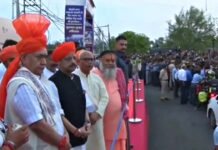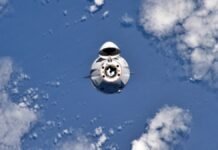
NASA: A team of Indian-origin scientists for NASA has developed Light and Quick-charged Batteries in the US. The special thing about these batteries is that they are very suitable for spacesuits and even they are suitable for Mars Rover and can be charged.
Who did this research
Shailendra Chiluwal of the Clemson Nanomaterials Institute at Clemson University, South Carolina, Navraj Sapkota, Apparao M. Rao and Ramakrishna Podila were members of the team that made the batteries.
Satellite will be used soon
Encouraged by this discovery, Podilla, an assistant professor in the Department of Physics and Astronomy of the College of Science, says that these new revolutionary batteries could soon be used in US satellites. Most satellites take their energy from the Sun but satellites also need to conserve energy when they pass through the Earth’s shadow and are not able to take energy from the Sun at that time.

Why light batteries
Podila said, “We had to make as many light batteries as possible because increasing the weight of the satellite also increases the cost of the operation.” NASA was funded for this research, which has been published in the American Chemical Society Darns Applite Materials and Interfaces.
Like cards
Podilla said that to understand this discovery one would have to imagine graphite annot like cards in the Lethian battery in which each card displayed a layer of graphite that saved the charge while still not in need of electricity. is. Podila said that the problem is that graphite cannot accumulate much charge.
Advantage of choosing silicon
For this, the team chose silicon for its work, which can store more charge. This meant that more energy could be stored in light cells. Instead of graphite cards, the researchers used layers of carbon nanotube material called buckypaper in new batteries between which silicon nanoparticles were placed.
Shailendra, a CNI graduate student and first author of this research, said that freestanding sheets of carbon nanotubes electrically connect silicon nanoparticles. In this way, the use of silicon and other nanomaterials not only increased the capacity of the battery but it also gave the ability to charge the batteries with more electricity, which meant that the battery could be charged quickly.
From cell phones to astronauts
Researchers say that anyone who has seen their cellphone shut down in the middle of their phone call will know the importance of this feature for battery technology. Fast-charging light batteries will prove to be a boon not only for astronauts wearing battery-powered suits, but also for scientists and engineers who carry them to space.
Rao, director of CNI and principal investigator of NASA’s grant, says silicon as an anode of silicon in lithium ion batteries is like a ‘cup of holy nectar’ for researchers. Rao told that new batteries will soon be installed in electric vehicles. Podila says that his team’s next goal is to meet industrial partners and convert this lab-based technology into market-useful technology.




















































